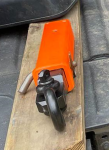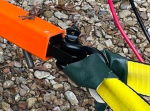WOODY2
Adventurer
That bent pin must have been very hard to remove from receiver without cutting it.This is going around as an example of a hitch pin failure (bent) as a recovery point. Someone said they had never seen a hitch pin bend.........Don't know the details of the pull, just fyi.
View attachment 736447View attachment 736448



